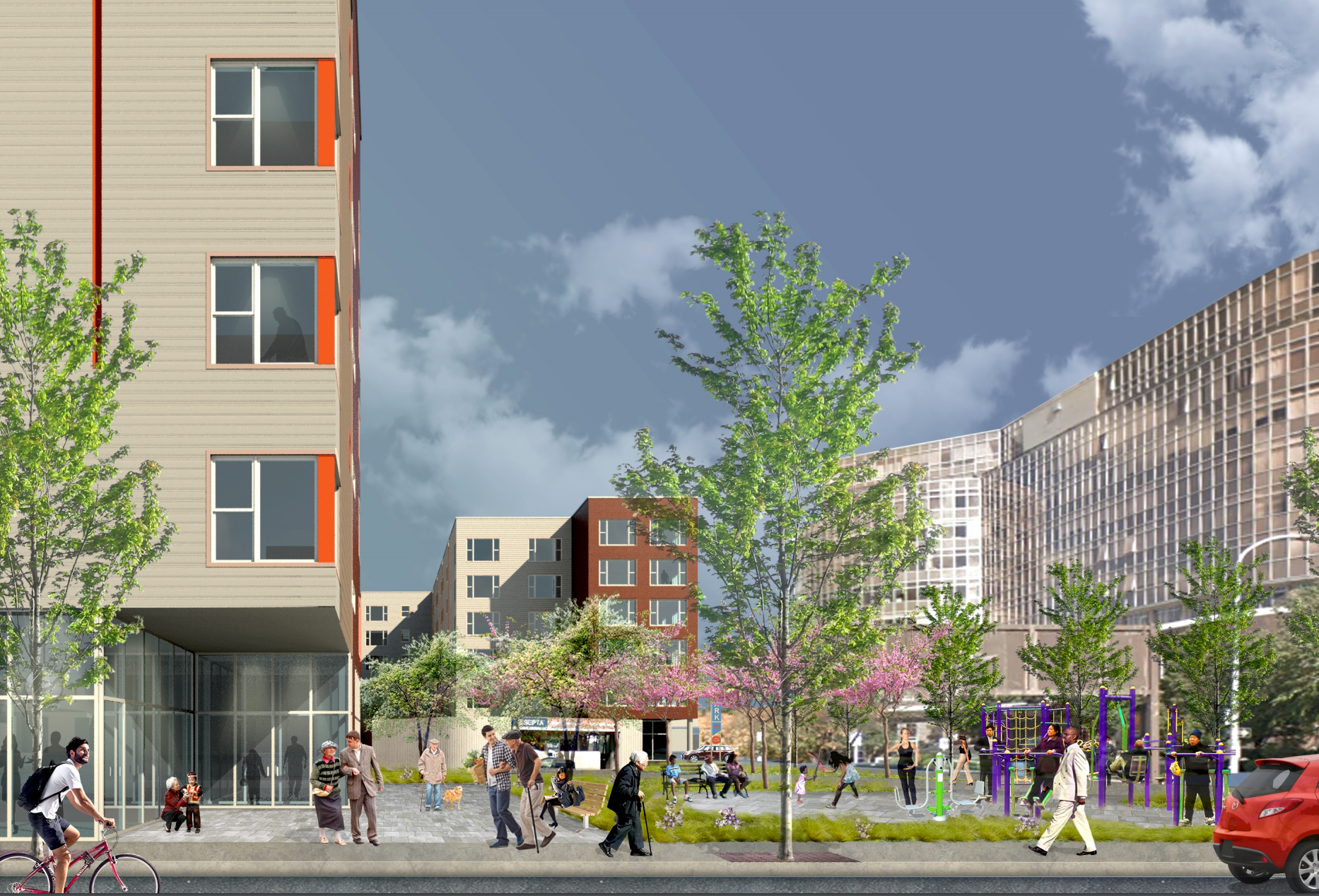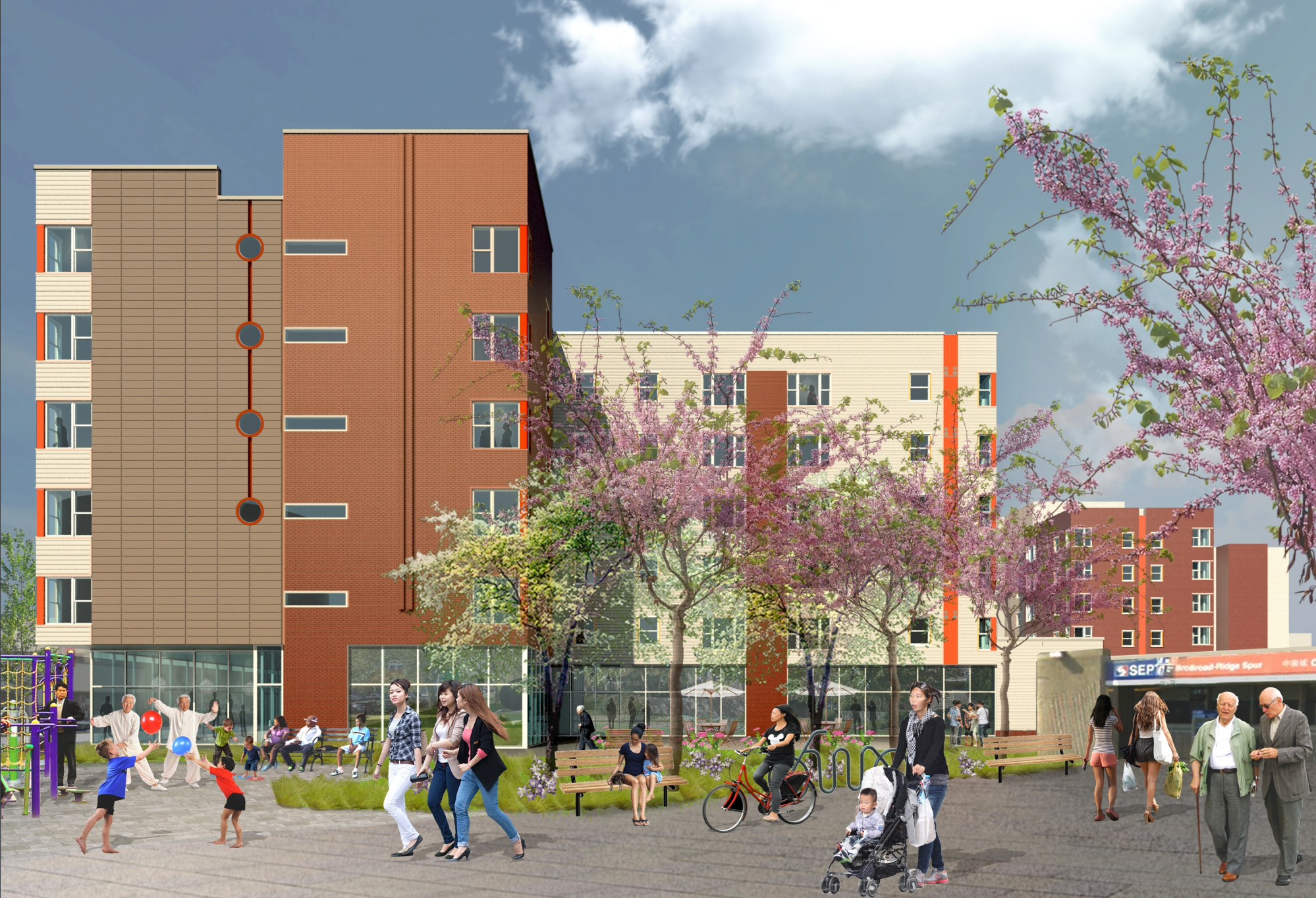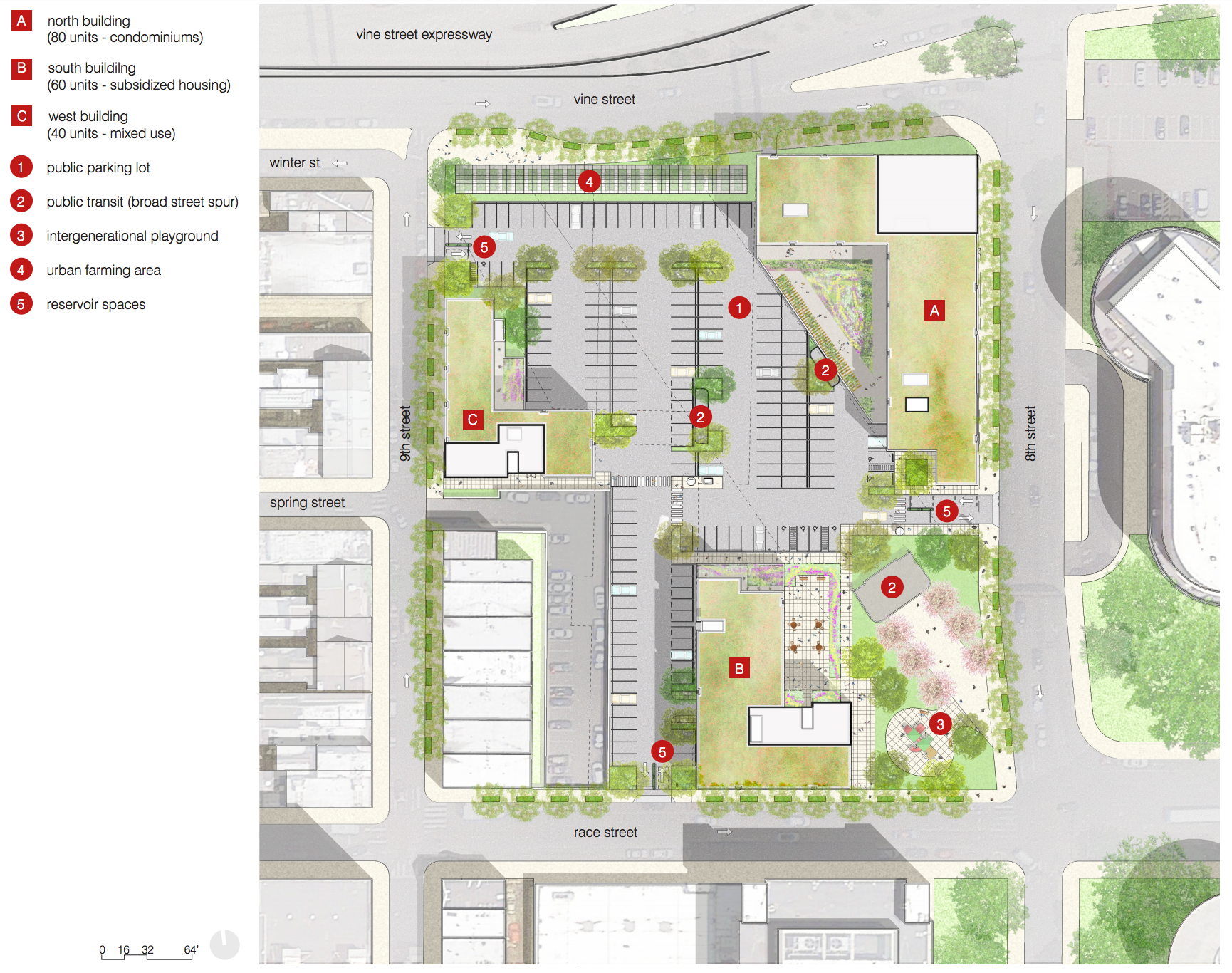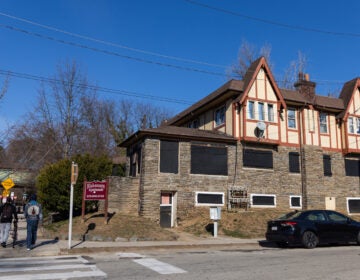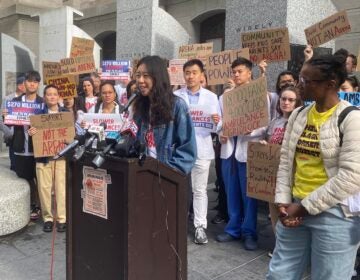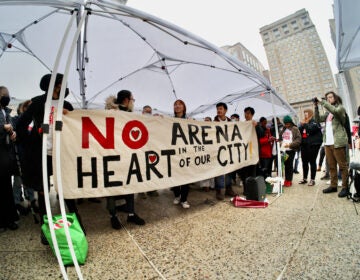Competing visions for ‘social impact’ development at 8th and Race
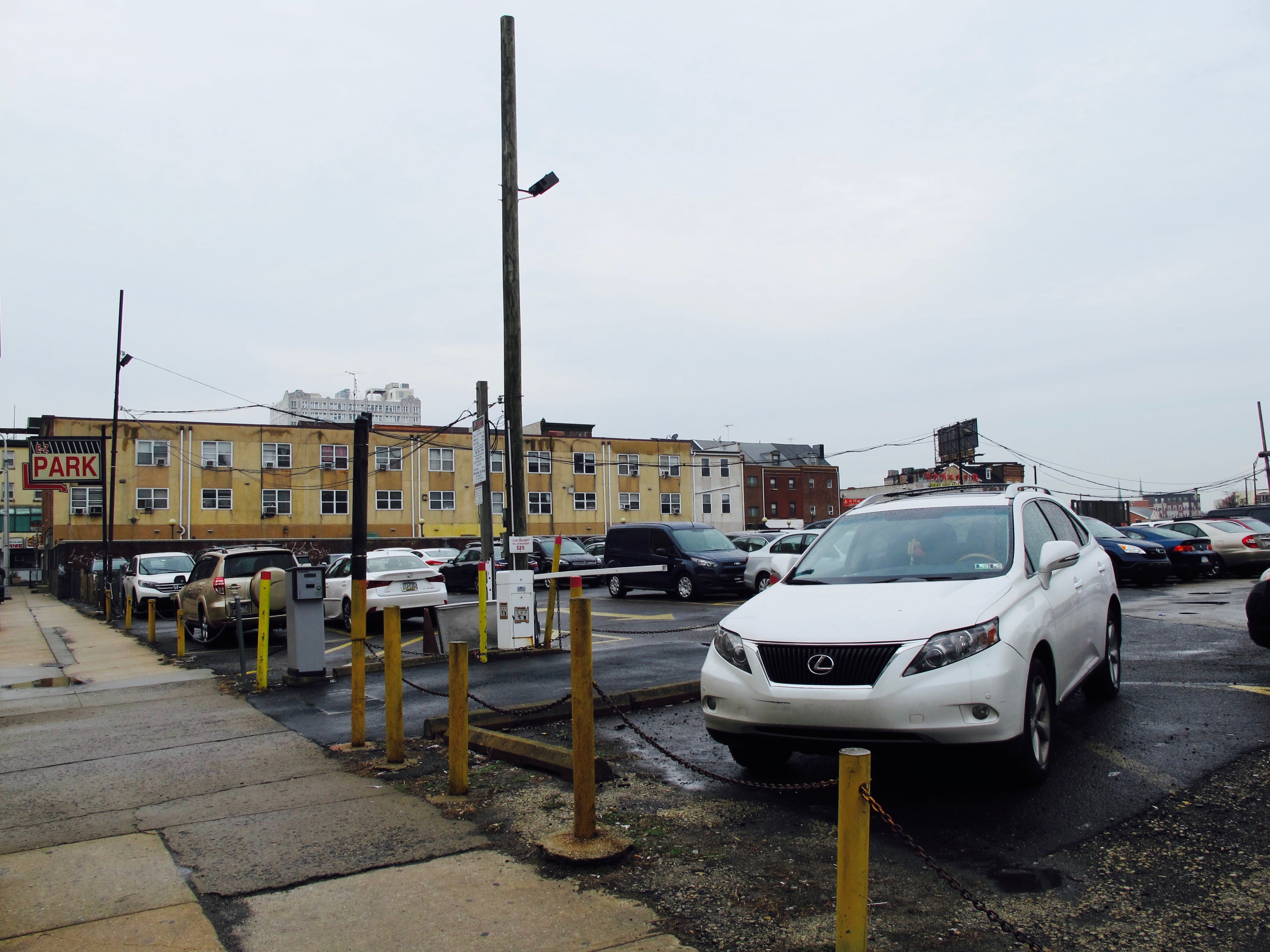
On Monday night, the battle lines formed around the last large undeveloped lot in Chinatown. The oceanic parking lot at 8th and Race, which also hosts a little used subway stop on the Broad-Ridge Spur, is a hot commodity after lying fallow for decades.
The forces on one side are the Parkway Corporation, in collaboration with the Philadelphia Chinatown Development Corporation (PCDC) and Presbys Inspired Life. They are advancing a design by renowned architect Cecil Baker.
On the other side, affordable housing developer Pennrose in alliance with a constellation of legal aid groups, EZPark, and local hotel developer United Development.
The Philadelphia Redevelopment Authority (PRA) issued a request for proposals in September, the agency’s first seeking “social impact” proposals, which drew only these two development proposals.
The two camps made their case to an overflowing crowd at 1234 Market Street on Monday evening. The quiet buzz of individual translators hummed in the background throughout the proceedings, as the presentations were translated into Mandarin, Cantonese, and Vietnamese.
The fiercest oratory came towards the end, as the Pennrose group faced criticism from a fiery audience member who questioned the group’s root in the community.
“My question is why is this property going to anybody else but the Chinatown community,” asked Cecilia Moy Yep, a legendary advocate and lifelong neighborhood resident.
Both developers met with PCDC after the Redevelopment Authority, which hosted Monday’s meeting, released an RFP for the vast parking lot at the northeastern corner of Chinatown. Though the lot is large, a significant portion of the property cannot be built on because of the Broad-Ridge Spur subway running beneath it and it must accommodate the Chinatown station entrance. [PRA spokeswoman Jamila Davis also reminded PlanPhilly that a sewer line and the commuter rail tunnel further complicate the site’s buildout.]
PRA declined to release the details of the proposals to the public (although executive director Gregory Heller said they are very similar in price).
But Parkway—which has a history in Chinatown—received the backing of PCDC, which is the dominant community organization in the neighborhood. In advance of this particular meeting, that support manifested in a petition drive urging residents to support affordable housing, and to “stand up against gentrification and reclaim Chinatown.”
Parkway’s project includes a mix of affordable senior apartments, market rate condos, and retail space that includes a supermarket. It also features an aeroponic urban farm, a cutting-edge technology that feeds plants with nutrient-enriched mists (thus requiring much less water than hydroponic farms). Nothing like it exists in Philadelphia.
The lead presenter, Parkway president Robert Zuritsky, compared their proposal to The Pearl—a Chinatown condo building they completed in 2008. He noted that half of the equity of that project had been raised from Asian investors and that 99 out of 100 units were purchased by Asian buyers.
The Parkway team estimated the condos proposed for the 8th and Race site would range in price between $300,000 for a one bedroom to three bedrooms starting at $500,000. The 60 units of affordable housing for seniors would be offered at different percentages of the area median income—20 percent, 50 percent, and 60 percent—with price estimates of between $300 and $900 a month.
PCDC’s executive director, John Chin, offered a speech in support of the proposal. He said that the CDC’s mission is to lift its constituents out of poverty, implying that the Parkway proposal offered the best means to achieve that goal.
Chin also offered that Chinatown is already 50 percent denser than the city as a whole. “Our people need breathing room,” he concluded.
The Parkway team repeatedly noted that their project offered shorter buildings, less density, and more parking at the behest of PCDC. None of the buildings would be taller than six stories.
“It’s important to note that we are keeping the density of the overall project down,” said Zuritsky. “We didn’t want to overpower this neighborhood with a gigantic development and then only have a couple parking spaces. We intentionally designed this with guidance from John to have more parking spaces and less density.”
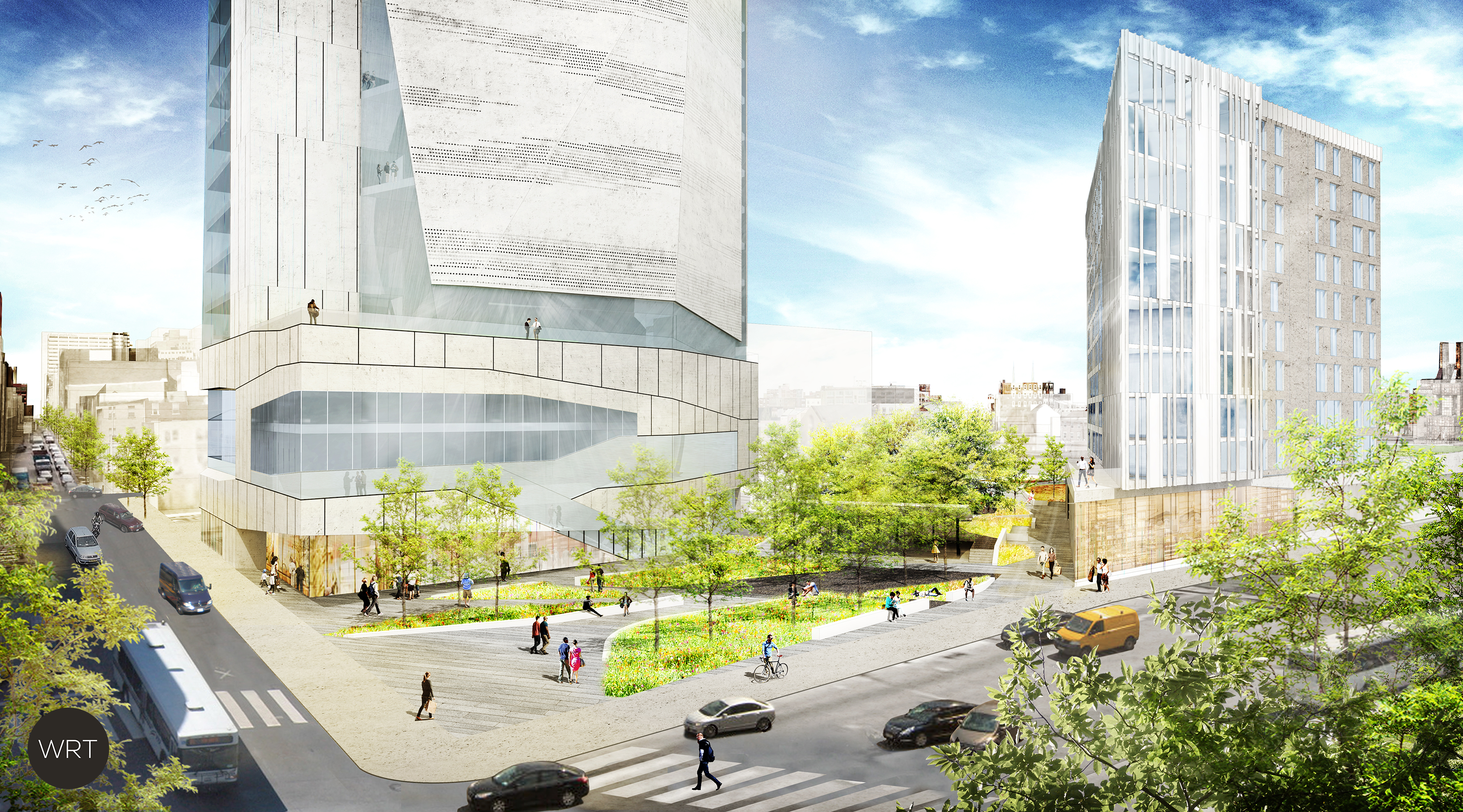
The Pennrose design team offered substantially taller buildings, although many of the offerings within them were broadly similar.
Commonalities included ground floor retail, 55-65 units of affordable housing for seniors, and between 150 and 160 units of market rate rental apartments. The presenters estimated studios would rent at $1,500 a month and two bedrooms would go for $2,200.
Both plans proposed basically the same amount of parking spaces, 180 (Pennrose) and 181 (Parkway).
The big difference: Instead of an aeroponic farm and a supermarket, there would be a 147-room hotel and an office building that would unify most of the city’s legal aid community under one roof.
It is this latter building, dubbed the Equal Justice Center, that is the centerpiece of Pennrose’s design. Pennrose vice president Timothy Henkel called it “our differentiator.”
At 160,000 square feet, and 14 stories tall, it would hold 300 employees of 25 non-profits in one place. The Equal Justice Center would house pillars of the legal aid world like Philadelphia Legal Assistance and Community Legal Services, which currently holds increasingly pricey offices on Chestnut Street around the corner from City Hall.
The proposal is meant to both save money for the legal aid organizations, which aren’t known for their fat coffers, and for their clients who will be able to travel to one place for many of their legal needs.
The Equal Justice Center would be the tallest building in Pennrose’s project. The affordable housing tower would be nine-stories and the market rate rentals in an 11-stories. The hotel, likely a Comfort Inn, would be eight stories tall.
Despite PCDC’s heated petition drive in advance of the hearing, the crowd seemed largely sympathetic to both designs.
At the end of the meeting the longtime Chinatown advocate, Yep, forcefully made an appeal to history for PCDC’s right to have a hand in developing Chinatown. She also feared the effects it would have on congestion: “My problem with the plan is that it will bring in too much traffic.”
Thoai Nguyen, head of the Southeast Asian advocacy group SEAMACC, said that he leaned the other way.
“The tie breaker for me is the Equal Justice Center,” said Nguyen. “In the next four years, and perhaps the next eight, our communities are going to be under attack. The Equal Justice Center to me is a no-brainer [for that reason]. But my very naive question is this: Is it possible that whichever proposal is selected would consider a version of the Equal Justice Center?”
The Redevelopment Authority’s Heller, who moderated the whole event, concluded the evening. The PRA board would chose between the two proposals based on their design, financing, and the social impact the respective plans would have on the city. After a developer is selected, several months will be spent hammering out an agreement with PRA, and securing approval by City Council.
*Note: An earlier version of this article misspelled Pennrose and mistakenly stated that Pennrose’s plan was proposing fewer parking spaces than Parkway. PlanPhilly regrets the error.
WHYY is your source for fact-based, in-depth journalism and information. As a nonprofit organization, we rely on financial support from readers like you. Please give today.



